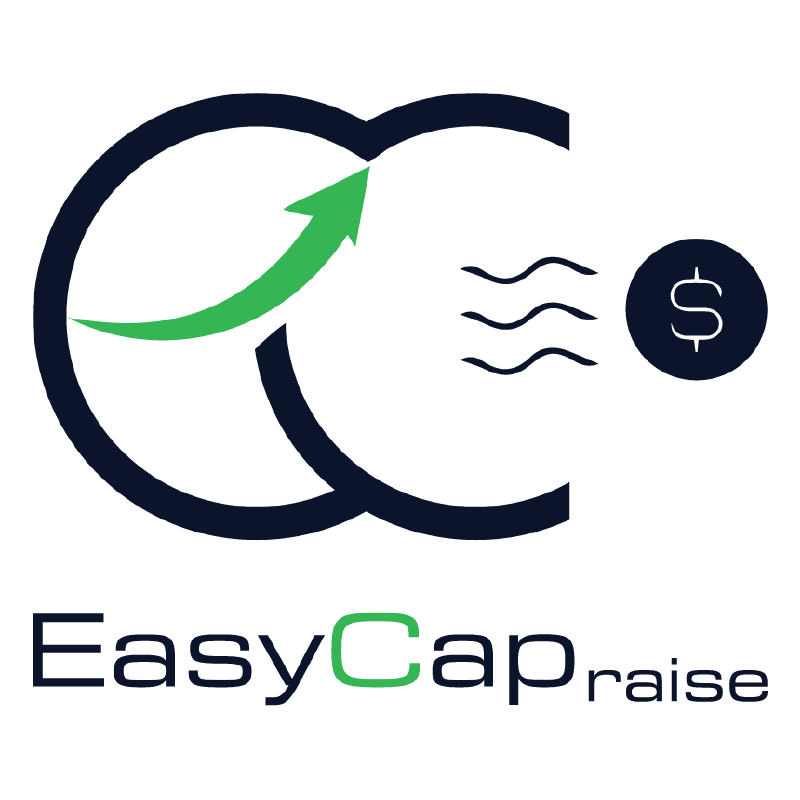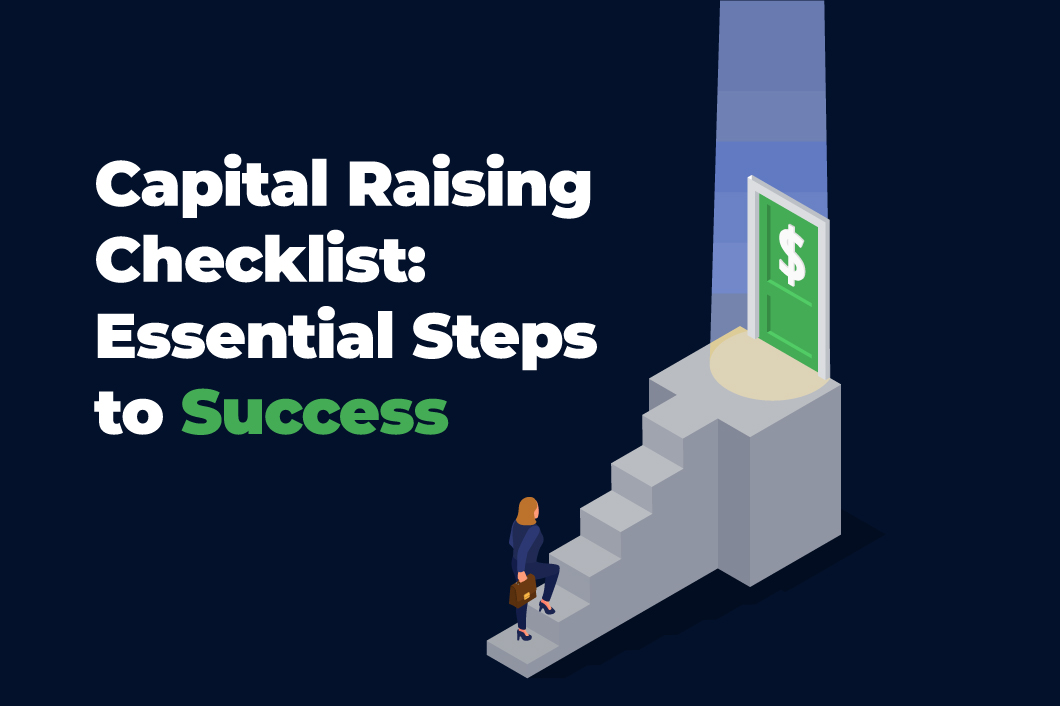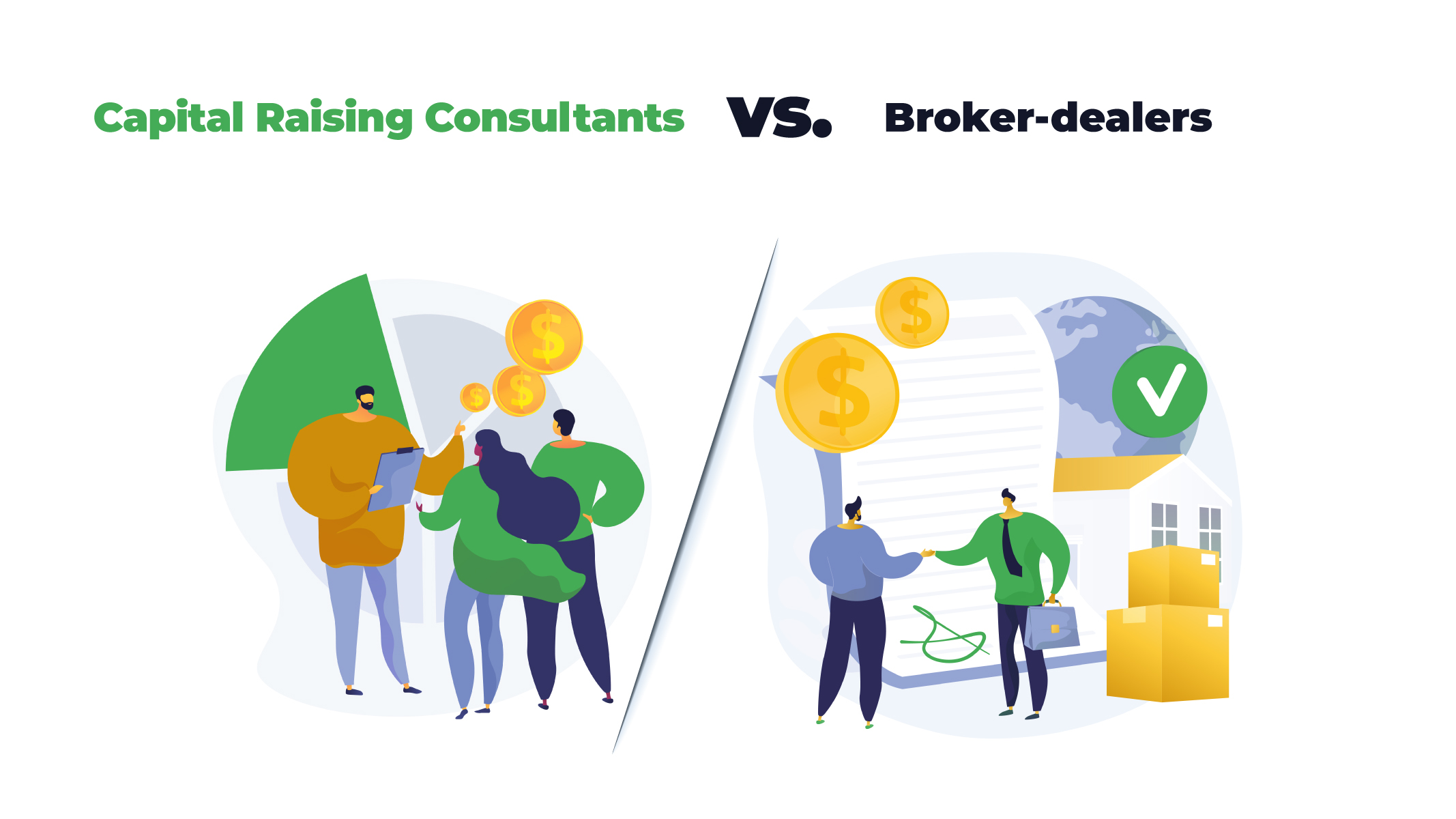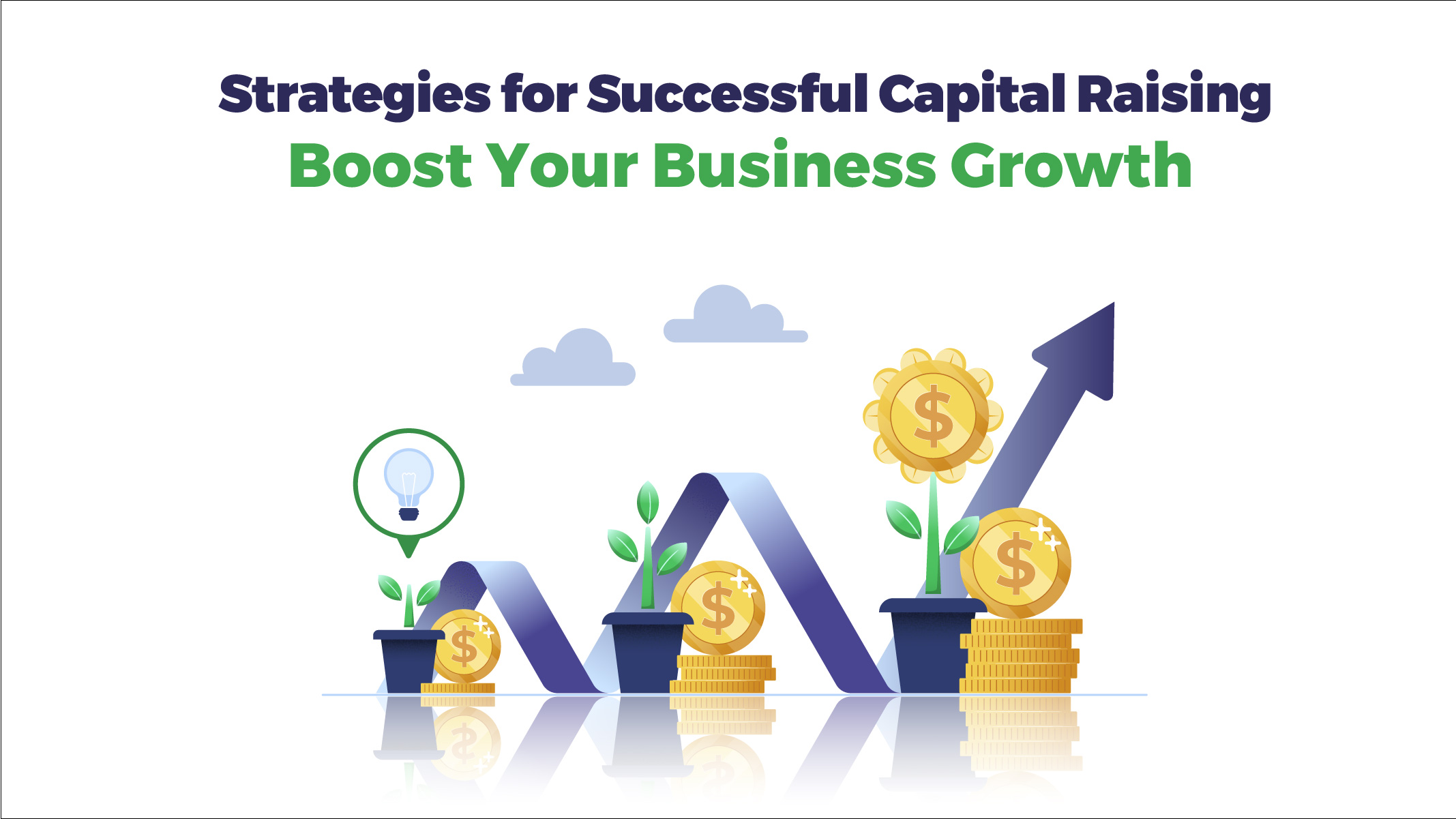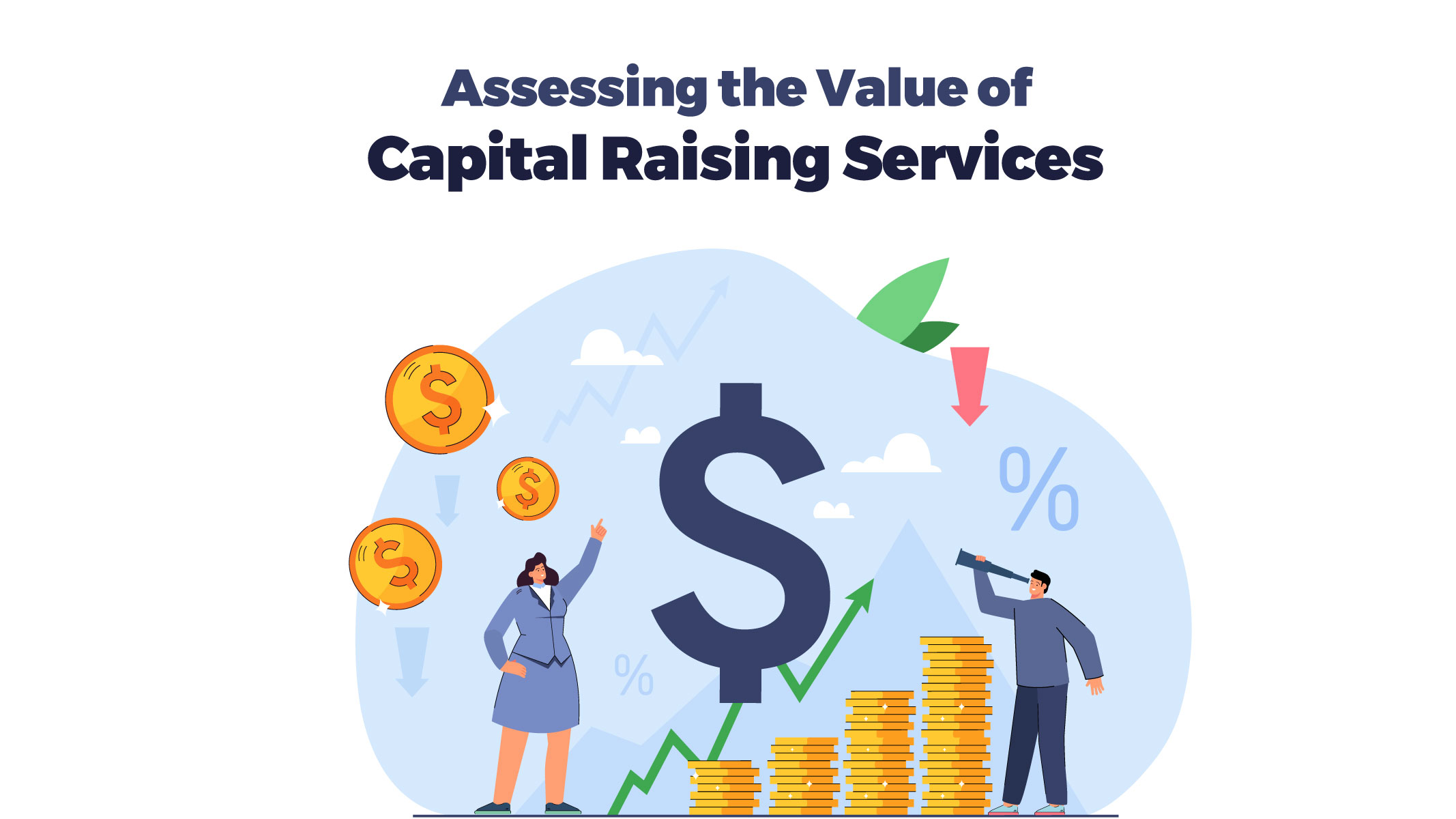Your Ultimate Fundraising Checklist: Essential Steps to Success In 2023
As a startup, raising funds is a critical part of your journey toward success. Without adequate funding, your business idea may never take off or may stall along the way. That’s why it’s crucial to have a fundraising checklist that will help you navigate the complex world of fundraising. In this article, we will outline a comprehensive fundraising checklist for startups.
Define Your Fundraising Goals
Defining fundraising goals is the process of determining the specific amount of money start-ups aim to raise within a given time frame. The goals should be specific, measurable, achievable, realistic, and time-bound. The more precise the fundraising goals, the easier it is to create a roadmap for fundraising and measure progress toward achieving them.
Quantifying fundraising goals is crucial because it allows the start-up to track their progress and identify if they are on track or behind schedule. Specific fundraising goals also allow start-up organizations to measure the effectiveness of their fundraising strategies and make data-driven decisions.
Why Do You Need Funding
Startups in different stages require funding for different purposes. For example, seed funding is typically used to cover initial startup costs, such as product development and market research. Series A funding is typically used to scale the business and expand operations. As a startup moves through different stages, its funding needs and goals may change, so it’s important to have a clear understanding of where your business stands and what you hope to achieve with each funding round.
In terms of having a successful fundraising checklist, first, you should know why you need funding:
Launching a new business
Starting a new business from scratch requires a significant investment of time, energy, and money. You may need funding to cover startup costs such as office space, equipment, legal fees, and initial marketing and advertising expenses. Without the necessary funds, it can be challenging to get your business off the ground and attract customers.
Scaling an existing business
If you’re looking to expand your business operations, you may need funding to support your growth. This could include investing in new technology, hiring additional staff, expanding your product line, or opening a new location. Without sufficient funding, it can be difficult to make the necessary investments to take your business to the next level.
Purchasing inventory or equipment
Whether you’re in the retail industry or operate a service-based business, you may need funding to purchase inventory or equipment to run your operations. This could include buying raw materials, stocking your shelves, or investing in technology to improve efficiency. Without the necessary funds, it can be challenging to keep up with demand and provide high-quality products or services.
Hiring and retaining employees
As your business grows, you may need to hire additional staff to support your operations. This could include hiring salespeople, customer service representatives, or administrative staff. Additionally, you may need funding to retain your top talent by offering competitive salaries and benefits packages.
Marketing and advertising
In order to attract and retain customers, it’s essential to invest in marketing and advertising. Whether you’re launching a new product or service or promoting an existing one, you may need funding to create compelling marketing campaigns that resonate with your target audience.
Research and development
If you operate in a competitive industry, it’s important to invest in research and development to stay ahead of the curve. This could include developing new products or services, improving existing ones, or conducting market research to better understand your customers’ needs and preferences.
Responding to unexpected expenses
No matter how well you plan, unexpected expenses can arise in any business. Whether it’s a sudden equipment failure, a legal dispute, or a natural disaster, having sufficient funds on hand can help you weather unexpected storms and keep your business afloat.
Obtaining working capital
Even profitable businesses can struggle with cash flow issues, especially during periods of rapid growth or seasonality. Funding can provide the working capital you need to cover expenses such as rent, payroll, and inventory without sacrificing your long-term financial stability.
How Much Do You Want to Raise
Before seeking funding, it’s important to have a clear idea of how much capital you need to achieve your business goals. Be precise and realistic depending on the stage of your startup and the needs of your business. Pre-seed, seed, and series A rounds have certain norms attached to them regarding the round’s size and the business’s progress. Therefore, it’s essential to do your research and understand the typical funding ranges for your stage of development. This will help you set realistic expectations and communicate effectively with potential investors.
When deciding how much to raise, consider the following:
Your business plan and growth projections: What are your short- and long-term goals, and how much capital will you need to achieve them?
Your current financial situation: How much capital do you already have, and how much do you need to bridge the gap?
The type of funding you’re seeking: Different types of funding may require different amounts of capital and come with different terms and conditions.
Your risk tolerance: How much equity or debt are you willing to take on, and what are the potential consequences of failure?
By answering these questions and creating a detailed fundraising plan, you can ensure that you’re raising the right amount of capital to meet your needs and set your business up for long-term success.
What Type of Investors
Once you have a clear idea of how much capital you need to raise, the next step is to consider what type of investors you want to target. This can be determined by creating a fundraising checklist and a fundraising event checklist to ensure that you’re reaching out to the right people and presenting your business in the best possible light.
There are several types of investors to consider, including:
- Angel investors: These are typically high-net-worth individuals who invest their own money in early-stage startups.
- Venture capitalists: These are professional investors who invest in startups with high growth potential.
- Crowdfunding investors: These are individuals who invest smaller amounts of money through online platforms.
- Corporate investors: These are established companies that invest in startups that align with their strategic goals.
- When deciding what type of investors to target, consider the stage of your business, your industry, and your growth potential. It’s also important to research potential investors and tailor your pitch to their specific interests and goals.
Equity investors
Equity investors, such as angel investors and venture capitalists, invest money in exchange for a stake in the company. This means that they become shareholders and have a say in the decision-making process. Equity investors can bring valuable expertise and connections to the table, and they are often looking for high-growth companies that have the potential for significant returns on investment.
On the other hand, lenders, such as banks or alternative lenders, provide funding in the form of loans. With loans, businesses borrow money that they must pay back over time, with interest. Unlike equity investors, lenders don’t take a stake in the company or have a say in how it’s run.
The main advantage of equity investment is that it does not require repayment of principal and interest, which can help startups avoid cash flow problems. Additionally, equity investors can provide valuable expertise and connections to help the company grow. However, equity investment also means giving up partial ownership and decision-making control, which can be a downside for some entrepreneurs.
Lending, on the other hand, allows businesses to retain ownership and control while still accessing the funds they need to grow. However, lenders often require collateral and may have strict requirements for repayment, which can be difficult for startups with limited cash flow. Additionally, the interest rates and fees associated with loans can add up over time and increase the overall cost of borrowing.
Ultimately, the decision between equity investment and lending depends on the specific needs and goals of the business. It’s important to carefully consider the pros and cons of each option and choose the one that aligns with your long-term vision for your company.
By carefully considering your options and creating a targeted fundraising plan, you can increase your chances of finding the right investors and securing the capital you need to take your business to the next level.
Ready to take your business to the next level? Connect with Easycapraise and gain access to a wide network of investors today. Start your fundraising journey now and achieve your business goals with our support. Contact us to learn more!
Are You Looking for Just Money or Also for Direct Involvement
When seeking funding for your startup, it’s important to consider not only the amount of capital you need but also the level of involvement you want from your investors. This can be determined by creating a fundraising checklist and a startup fundraising checklist to ensure that you’re targeting investors who align with your goals and expectations.
Some investors may simply provide funding in exchange for equity, while others may want to be more involved in the day-to-day operations of your business. This could include providing mentorship, making introductions to potential customers or partners, or even taking a seat on your board of directors.
When deciding what level of involvement you want from your investors, consider the following:
- Your business goals: What do you hope to achieve with your startup, and how can your investors help you get there?
- Your existing network: Do you already have access to mentors or advisors who can provide the guidance and support you need?
- The stage of your business: If you’re in the early stages of your business, you may benefit from more hands-on involvement from your investors. If you’re more established, you may prefer a more hands-off approach.
By carefully considering your options and creating a clear plan for investor involvement, you can ensure that you’re working with investors who share your vision for your business and can help you achieve your goals.
Make Sure You Are Prepared to Raise Funds (take our quiz)
Fundraising is the process of obtaining money or capital to fund a startup or a business project. Before starting the fundraising process, it’s essential to define fundraising goals. These goals include understanding why you need funding, how much money is required, what type of investors to target, whether you’re looking for just funding or direct involvement, and who is responsible for the fundraising process. It’s also crucial to ensure that the startup is an attractive investment, with a clear idea, a complete team, validated assumptions, traction numbers, product-market fit, scalability, unit economics, long-term vision, unique selling proposition, and social proof. Also, creating a professional pitch deck, starting with a template, emphasizing strengths, and running test pitches to get feedback, is essential for a successful fundraising process.
You can take a simple quiz on the Easycapraise website. But WHY? By taking the time to complete a fundraising quiz and a thorough fundraising checklist, fully prepared to approach potential investors with confidence and clarity. This will also help you to identify any gaps or areas of weakness in your fundraising strategy that need to be addressed before you begin reaching out to investors.
By taking the time to prepare and assess your readiness to raise funds carefully, you can maximize your chances of success and attract the right investors for your business. Remember to keep your fundraising checklist and startup fundraising checklist up to date as your business grows and evolves so that you’re always prepared to take advantage of new opportunities as they arise.
Prepare Needed Fundraising Materials
When it comes to fundraising, having the right materials can make all the difference in attracting investors. Some of the most important materials to prepare to include a pitch deck, financial model, virtual data room, and business plan/whitepaper.
Pitch Deck
The pitch deck is a visual presentation that outlines your business model, market opportunity, and growth potential. It’s designed to capture the attention of investors and give them a clear understanding of your business and its potential for success.
A financial model is a detailed projection of your company’s financial performance over time. It should include realistic revenue and expense projections, as well as a clear understanding of your cash flow needs and capital requirements.
Creating a virtual data room is also important for fundraising, as it provides a secure and organized way to share sensitive information with potential investors. This can include financial statements, legal documents, and other information that investors may need to review before making a decision.
By preparing these materials in advance, you can show potential investors that you’re serious about your business and have worked to position it for success. Be sure to keep these materials updated as your business grows and evolves so that you always have the most up-to-date information available to share with investors.
Run Your Fundraising Process

Running a successful fundraising process requires careful planning and execution. Here are some important steps to keep in mind:
Vetting a Target List
Before you start reaching out to investors, it’s important to vet your target list carefully. Make sure you are targeting investors who are a good fit for your business and who have a track record of investing in companies like yours.
Warm and Cold Approach
When it comes to reaching out to investors, there are two main approaches: warm and cold. Warm outreach involves leveraging your existing network to get introductions to investors, while cold outreach involves reaching out to investors you don’t know yet. Both approaches can be effective, depending on your situation.
Investor CRM
Managing your investor relationships is crucial for long-term success. Consider using an investor CRM (customer relationship management) tool to keep track of your conversations with investors and to stay organized.
Contact Strategy for Every Investor (or Investor Update for Every Investor)
Finally, make sure you have a contact strategy for every investor you are targeting. This may involve regular investor updates to keep them informed of your progress, or it may involve more frequent communication if they are actively considering investing in your business. Tailor your approach to each investor to increase your chances of success.
Negotiating the Term Sheet
Once you have secured interest from investors, the next step is to negotiate the term sheet. This document outlines the terms of the investment and serves as the foundation for the rest of the investment process.
One important aspect of negotiating the term sheet is understanding your cap table. This is a record of all the shareholders and the ownership percentages of your company. It’s important to have a clear understanding of your cap table before negotiating the term sheet, as it will impact the terms of the investment. Also, you should create a strong cap table.
It’s also important to have a lawyer review the term sheet before signing. They can help you identify any potential red flags or unfavorable terms that you may want to negotiate. It’s better to take the time to get it right from the start than to have to renegotiate down the line.
As you negotiate the term sheet, it’s important to keep your fundraising checklist in mind. This can help ensure that you are negotiating the right terms and that you have considered all the important factors for your fundraising process.
By following a checklist for fundraising and taking the time to negotiate the term sheet carefully, you’ll be better positioned to secure a successful investment and set your business up for growth and success.
Summary
This article provides a comprehensive fundraising checklist for startups to navigate the complex world of fundraising. The article highlights the importance of defining fundraising goals, knowing the reasons for seeking funding and determining the amount of capital needed. Additionally, it explains different types of investors, including angel investors, venture capitalists, crowdfunding investors, and corporate investors, that startups can target and tailor their pitch to their specific interests and goals.
FAQs
Why is defining fundraising goals important for startups?
Defining fundraising goals allows startups to track their progress and measure the effectiveness of their fundraising strategies. Specific goals also help nonprofits make data-driven decisions.
What are the reasons for seeking funding?
Startups seek funding for launching a new business, scaling an existing business, purchasing inventory or equipment, hiring and retaining employees, marketing and advertising, research and development, responding to unexpected expenses, and obtaining working capital.
What types of investors can startups target?
Startups can target angel investors, venture capitalists, crowdfunding investors, and corporate investors. The decision on which type to target should depend on the stage of the business, industry, and growth potential.
What are fundraising materials?
Donation request letters or emails: These are written communications that are sent to potential donors, explaining the organization’s mission and asking for a donation.
Brochures and flyers: These are printed materials that provide more detailed information about the organization, its programs, and its impact.
Annual reports: These are documents that summarize the organization’s achievements and financial performance over the past year and may include a request for donations.
Online fundraising campaigns: These can take many forms, including social media campaigns, crowdfunding platforms, and online donation forms.
Event materials: These are promotional materials created for fundraising events, such as invitations, posters, and programs.
Conclusion
Raising funds is a critical part of a startup’s journey toward success. A clear understanding of fundraising goals, the reasons for seeking funding, and the amount of capital needed can set a startup up for long-term success. Additionally, by carefully considering different types of investors, startups can tailor their pitch and increase their chances of securing the capital they need to take their business to the next level.
Contact us
Good to have you here! If you have any queries, please leave your message. Our team will reach out soon:)
.
